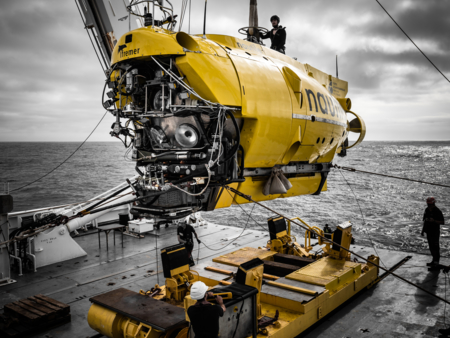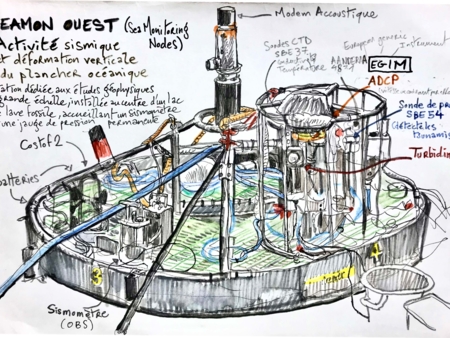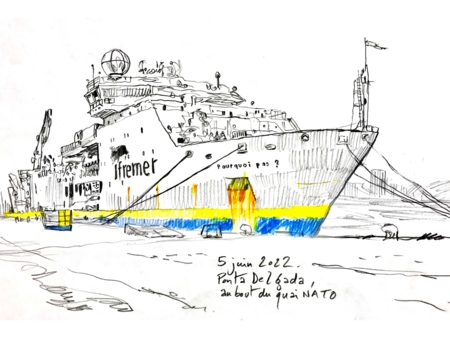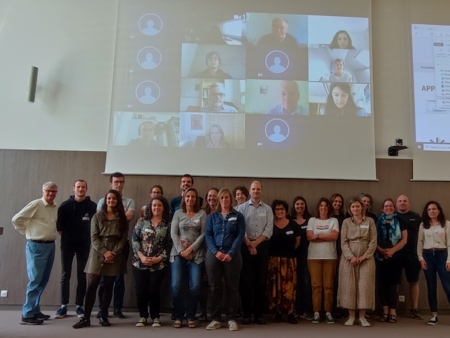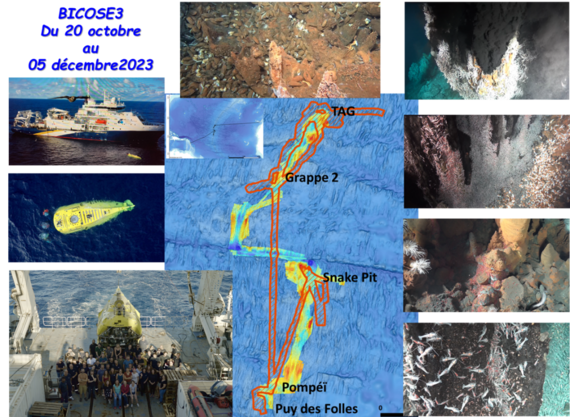Bicose 3 cruise : October 20th-December 5th, Mid-Atlantic Ridge
Marie-Anne Cambon, chief scientist, Ifremer Brest
The aim of the BICOSE3 cruise was to explore over 800 km of the mid-Atlantic ridge between 26°N (TAG) and 21°N (Puy des Folles), in order to establish more precisely i) the functioning of the geological system underlying this hydrothermal activity, > 125,000 years for TAG ; ii) community distribution maps linking in situ observations and inventories using integrative taxonomy approaches; iii) the connectivity of key species taking into account all active sites; iv) the in situ functioning of holobionts in contrasting areas and over the life cycle (including the key symbiont acquisition stage); v) the settlement processes of new recruits and the influence of environmental conditions on this settlement using in situ colonization experiments deployed on active and inactive sites of different ages; vi) the sensory and acclimatization capacities of holobionts using in vivo approaches; vii) and finally lead to a redefinition of the notions of active and inactive sites, taking into account the gradient between the two extremes and the distribution of biotopes and biodiversity (micro to macro) within the TAG district.
Ultimately, our aim is to gain a holistic understanding of how these environments function, both geologically and biologically. These studies aim to respond to societal concerns about protecting and respecting these biotopes, based not only on the biodiversity they contain, but also on their key functions, enabling them to be resilient, adapt and evolve in the face of natural or anthropogenic change. This work is part of the LIFEDEEPER France 2030 project, the EU DEEP REST project and France 2030 Mission 1.
Overall, during the cruise, we carried out SMF surveys covering an acquisition area estimated at 17,000 km2, 17 rock dredges, 18 USNEL cores and 17 MTB cores, 8 epibenthic sledging operations and 27 Nautile dives for in situ measurements, video and sampling.

